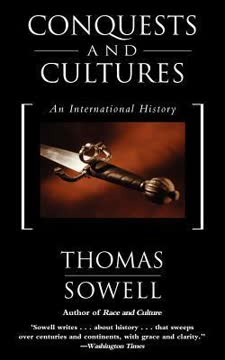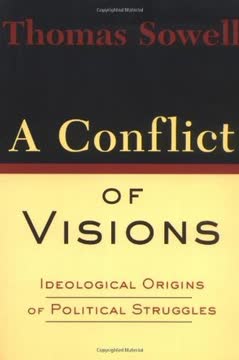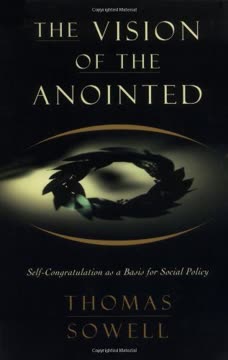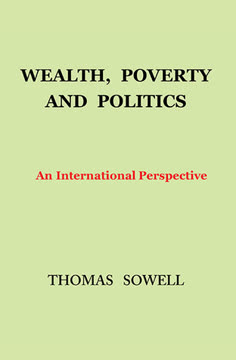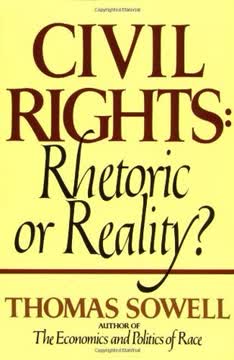Key Takeaways
1. Conquest Shapes Culture: A World Transformed
“We do not live in the past, but the past in us.”
Conquest's pervasive influence. Conquest is not merely a historical event but a powerful force that continues to shape the world's cultures, languages, economies, and moral frameworks. The Western Hemisphere, for instance, is a testament to this, with European languages and moral standards dominating even among those who critique European civilization. Conquests, like migrations, have changed the cultural landscape of the world.
Ambiguous role. Conquest's role in spreading human capital is varied. When advanced societies conquer less developed ones, knowledge, skills, and technology spread. However, when less developed conquer more advanced, it can lead to the destruction of existing human capital and hinder civilization's progress.
Beyond tragedy. While conquests often involve atrocities, their consequences extend far beyond these tragedies. They can lead to the exchange of skills, ideas, and technologies, ultimately reshaping entire ways of life and expanding possibilities for future generations.
2. The British: From Conquered to Conquerors
How, in the first place, did a peripheral island rise from primitive squalor to world domination?
From periphery to power. Britain's history is a story of transformation, from a backward province of the Roman Empire to the center of a global empire. This journey involved successive conquests, cultural infusions, and a unique combination of geographic advantages and institutional developments.
Roman influence. The Roman conquest brought advanced civilization to Britain, but the subsequent barbarian invasions led to a period of retrogression. Later, the Norman conquest introduced French language and culture, shaping the English aristocracy and legal system.
Industrial revolution. England's unique combination of factors, including a dependable legal framework, a commercial tradition, and geographic advantages, propelled it to become the first industrial nation, leaving a lasting impact on the world.
3. Slavs: Echoes of Empires and Geographic Divides
In eastern Europe, successions of regimes have been trying for a thousand years and more to impose a viable political hegemony on the scores of ethnic and national groups in the area, invariably in vain.
A history of subjugation. The Slavs of Eastern Europe have experienced a long history of conquests and subjugation under various empires, including the Mongols, Germans, Ottoman Turks, and Habsburgs. This has resulted in cultural fragmentation and a lag in economic and social development compared to Western Europe.
Geographic barriers. Eastern Europe's geography, characterized by a lack of access to oceans, harsh climates, and mountainous terrain, has hindered economic and cultural interactions, contributing to its relative backwardness.
Cultural influences. Despite these challenges, the Slavs have been influenced by various cultures, including Roman, Byzantine, and Germanic. These influences have shaped their languages, religions, and social structures, creating a complex and diverse cultural landscape.
4. Africa's Geography: A Continent Shaped by Barriers
In understanding Black Africa, geography is more important than history.
Geographic isolation. Sub-Saharan Africa's geography, marked by vast deserts, limited navigable rivers, and disease environments, has historically isolated its peoples from the outside world and from one another.
Limited development. This isolation has hindered economic and cultural development, leading to linguistic fragmentation, tribalism, and vulnerability to outside conquerors.
Forms of subjugation. The subjugation of African peoples has taken the form of territorial conquests and mass enslavement, both heavily influenced by the continent's geography.
5. Western Hemisphere Indians: Conquest and Cultural Clash
The American continents existed geologically, much as we now know them, before the first human crossed over from the Eurasian mainland.
Diverse societies. The indigenous peoples of the Western Hemisphere were diverse, ranging from complex urban civilizations like the Maya, Aztecs, and Incas to hunter-gatherer tribes. However, they lacked key technologies and animals found in the Old World.
Disease and conquest. The arrival of Europeans brought devastating diseases that decimated Indian populations, facilitating European conquest and cultural dominance.
Uneven impact. The impact of European conquest varied across the hemisphere, with some regions experiencing greater cultural and biological amalgamation than others.
6. Human Capital: The Engine of Progress
What matters ultimately is not what themes or conclusions are proposed here, but the facts behind those themes and conclusions.
Beyond material wealth. The histories examined in this trilogy underscore the paramount importance of human capital—skills, knowledge, institutions, and attitudes—in driving economic and social progress.
Cultural transmission. The transfer of human capital from one group to another, whether through migration, conquest, or cultural exchange, has been a key factor in the rise and fall of civilizations.
Uneven distribution. The uneven distribution of human capital, both within and between societies, has created vast disparities in wealth, power, and well-being.
7. The Double-Edged Sword of Cultural Diffusion
While migrations have transferred knowledge, skills, technology, and economically valuable aptitudes around the world, conquests have played a more varied and ambiguous role.
Cultural exchange. Contact between cultures, whether through migration, conquest, or commerce, can lead to the exchange of material goods, skills, and ideas, enriching both societies.
Dissemination challenges. However, cultural diffusion is not always automatic or uniform. Uneven dissemination can create greater inequality and social tensions within conquered societies.
Resistance and collaboration. Different groups within a conquered nation may react differently to the conqueror, leading to lasting intergroup bitterness and conflict.
8. Ideas, Ideologies, and the Unfolding of History
What matters ultimately is not what themes or conclusions are proposed here, but the facts behind those themes and conclusions.
Ideas' influence. Ideas and ideologies have played a significant role in shaping history, but their origins often lie in practical realities rather than purely intellectual exercises.
Freedom's evolution. The concept of freedom, for example, emerged gradually in Europe as a result of specific historical circumstances, rather than being imposed by any particular ideology.
The power of moral imperatives. Moral imperatives, such as the anti-slavery movement, can have a profound impact on political and social change, especially when backed by military power.
9. The Enduring Legacy of Conquest
Explosive issues of racial differences can be assessed more rationally on an international scale and over many centuries of history, viewing other times and peoples more dispassionately than we can our own, and drawing on a wider variety of evidence produced under a wider range of circumstances than in the contemporary world around us.
Beyond doctrine. The study of conquests and cultures reveals the complexities of history and the limitations of abstract theoretical models.
The importance of knowledge. What matters most is not the conclusions reached but the knowledge and understanding acquired in the process of reaching them.
A broader perspective. Examining historical events on an international scale and over many centuries provides a more rational and nuanced understanding of racial and cultural issues.
Last updated:
FAQ
What is Conquests and Cultures: An International History by Thomas Sowell about?
- Comprehensive historical analysis: The book examines how conquests have shaped the economic, cultural, and political histories of various peoples and regions, including Africa, Eastern Europe, and the Western Hemisphere.
- Focus on culture and human capital: Sowell argues that cultural capital—skills, knowledge, and social institutions—plays a decisive role in shaping societies’ destinies, more so than race or natural resources.
- Interplay of conquest and culture: The narrative explores how conquerors and the conquered interact, how cultures merge or clash, and the long-term consequences of these encounters.
- Global and comparative scope: The book draws parallels across continents and centuries, analyzing the recurring patterns and unique outcomes of conquest worldwide.
Why should I read Conquests and Cultures by Thomas Sowell?
- Nuanced understanding of history: The book moves beyond moralistic or ideological narratives, offering empirical analysis grounded in historical data and real-world examples.
- Insight into cultural and economic disparities: Readers gain perspective on why some societies advanced while others lagged, emphasizing the importance of cultural capital and institutions.
- Clarification of complex issues: Sowell addresses sensitive topics like racism, assimilation, and the role of ideas in history with clarity and depth.
- Contemporary relevance: The book connects historical events to modern issues, such as ethnic conflict, economic development, and social policy.
What are the key takeaways from Conquests and Cultures by Thomas Sowell?
- Cultural capital drives progress: Skills, knowledge, and social institutions are more decisive for economic and social advancement than race or natural resources.
- Conquest disrupts and transforms: European and other conquests led to demographic collapse, cultural disintegration, and dependency among indigenous peoples, but also to cultural diffusion and adaptation.
- Ideas and institutions matter: Political freedom, legal frameworks, and openness to innovation have enabled some societies to flourish, while resistance or negative human capital hindered others.
- Complexity of race and racism: Sowell distinguishes between genetic, cultural, and social factors, arguing that simplistic explanations for group disparities are inadequate.
How does Thomas Sowell define and use the concept of "culture" in Conquests and Cultures?
- Culture as practical machinery: Sowell describes culture as the "working machinery of everyday life," judged by its effectiveness in producing results rather than its aesthetic value.
- Distinct group cultures: He emphasizes that racial, ethnic, and national groups have distinct cultures that shape their economic and social histories.
- Cultural capital: The book highlights the importance of human capital—attitudes toward work, education, cooperation, and law—as central to a group's success or failure.
- Culture over genetics: Sowell argues that cultural differences, not genetic ones, are the primary drivers of group disparities in history.
What role does conquest play in shaping cultures according to Conquests and Cultures by Thomas Sowell?
- Varied consequences of conquest: Conquest can spread advanced technology and human capital, but can also destroy more advanced civilizations when less developed peoples conquer them.
- Cultural diffusion and inequality: Conquests often lead to uneven dissemination of culture, creating economic inequalities and reshuffling social hierarchies.
- Legacy of violence and accommodation: While conquests have involved atrocities and oppression, they have also led to cultural accommodation and the adoption of conquerors’ practices by the conquered.
- Long-term transformation: The effects of conquest persist for centuries, influencing languages, economies, and moral frameworks.
How does geography influence historical outcomes in Conquests and Cultures by Thomas Sowell?
- Geographical barriers and opportunities: Natural features like mountains, deserts, and rivers shape the development of cultures and the feasibility of conquest.
- Transportation and resources: Access to navigable waterways and resources such as coal and iron has historically given certain regions, like Britain, significant economic and military advantages.
- Disease and environment: Environmental factors, including disease resistance, have influenced patterns of conquest and colonization, as seen in Africa and the Americas.
- Isolation and fragmentation: Geographic isolation can lead to cultural fragmentation, as in Africa, limiting trade and cultural exchange.
How does Conquests and Cultures by Thomas Sowell explain the rise of Britain from a conquered land to a global empire?
- Roman and post-Roman influence: Britain began as a backward Roman province and regressed after Roman withdrawal, but later conquests by Germanic tribes and Normans reshaped its culture and institutions.
- Industrial revolution and human capital: Britain’s unique geography, legal institutions, and openness to cultural diffusion, including the contributions of immigrants, fostered industrialization and global leadership.
- Spread of British institutions: British law, political freedoms, and technology were disseminated worldwide through empire and migration, leaving a lasting legacy.
- Internal diversity: The book also explores the distinct economic and cultural trajectories of England, Wales, Scotland, and Ireland.
What does Thomas Sowell say about the impact of European imperialism and colonialism in Africa in Conquests and Cultures?
- Low-cost imperialism: European powers often ruled Africa with minimal resources, using indirect rule through local authorities, which profoundly affected African societies.
- Limited transfer of practical knowledge: Western-educated African elites often returned with social theories rather than practical skills, leading to post-independence economic and political challenges.
- Economic consequences: Many African nations experienced economic decline after independence, though some improved by adopting pragmatic policies in the 1980s.
- Cultural and ethnic fragmentation: Colonial boundaries and policies exacerbated existing ethnic divisions, complicating nation-building efforts.
How does Conquests and Cultures by Thomas Sowell address the history and legacy of slavery in Africa and the African diaspora?
- Widespread and varied slavery: Slavery was a global phenomenon, but Africa’s slave trade was especially massive, with millions exported to the Americas and Islamic countries.
- Demographic and social effects: The slave trade caused population imbalances, social disruption, and changes in traditional roles, with devastating human costs.
- Abolition struggles: The process of ending slavery was prolonged and difficult, with Britain playing a key role in suppression despite resistance.
- Different legacies: The African diaspora in the Americas and Islamic countries had distinct demographic and cultural outcomes, shaped by mortality, manumission, and social integration.
What are the main differences in the development of the Slavs in Eastern Europe compared to Western Europe, according to Conquests and Cultures by Thomas Sowell?
- Geographic and cultural lag: Slavs historically lagged behind Western Europe due to isolation, harsher climate, and lack of Roman cultural legacy.
- German influence and urbanization: German settlers and culture played a major role in economic development, but also caused ethnic tensions.
- Political fragmentation: Ethnic diversity and lack of democratic traditions led to frequent conflicts and authoritarian regimes.
- Role of Russian Empire and Soviet Union: Both empires ruled over diverse nationalities, often with Russian dominance and varying degrees of assimilation or repression.
How does Conquests and Cultures by Thomas Sowell explain the impact of European conquest on indigenous peoples of the Western Hemisphere?
- Devastating demographic effects: European diseases caused catastrophic population declines among indigenous peoples, often more decisive than military conquest.
- Cultural and technological disparities: Indigenous societies’ lack of writing, draft animals, and certain technologies limited their ability to resist or adapt.
- Long-term transformation: Conquest led to loss of land, autonomy, and cultural traditions, with many indigenous peoples assimilated into European-derived societies.
- Varied colonial approaches: The nature of colonization differed between Latin America and North America, affecting demographic and cultural outcomes.
What is the significance of cultural diffusion and borrowing in Conquests and Cultures by Thomas Sowell?
- Foundation of civilizations: Cultural diffusion—the spread of ideas, technologies, and institutions—has been central to the rise and fall of civilizations.
- Examples of successful borrowing: The British and Japanese rises to prominence involved extensive borrowing and adaptation of foreign practices.
- Cultural resistance: Societies that resisted new ideas, often out of pride or tradition, were hindered in their development, as seen in China’s reluctance to adopt Western technology.
- Receptivity as key to advancement: Sowell argues that openness to cultural borrowing is a crucial factor in societal progress.
Review Summary
Conquests and Cultures is highly praised for its comprehensive examination of how conquests shaped world history and cultural development. Readers appreciate Sowell's unbiased approach, extensive research, and clear writing style. The book challenges common assumptions about race, culture, and societal progress, offering insights into the complex factors influencing human capital and economic success. While some found it dense, most reviewers consider it an essential read for understanding global history and cultural interactions, praising Sowell's ability to present complex ideas accessibly.
Cultures Series
Similar Books
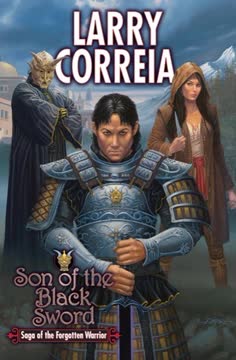
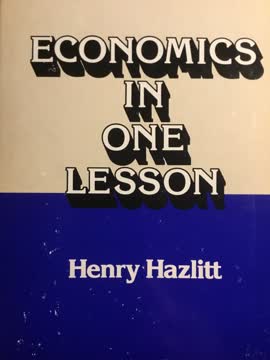




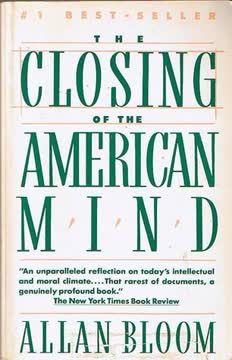
Download PDF
Download EPUB
.epub digital book format is ideal for reading ebooks on phones, tablets, and e-readers.
